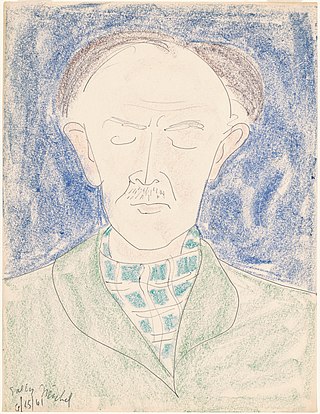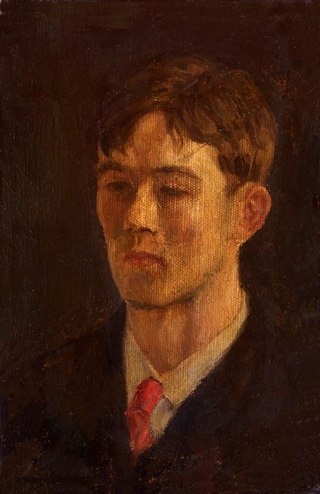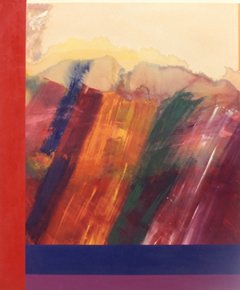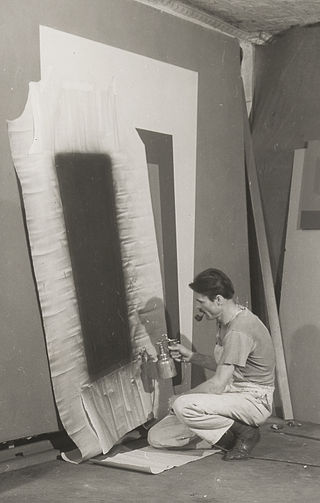Related Research Articles

Milton Clark Avery was an American modern painter. Born in Altmar, New York, he moved to Connecticut in 1898 and later to New York City. He was the husband of artist Sally Michel Avery and the father of artist March Avery.

Franz Kline was an American painter. He is associated with the Abstract Expressionist movement of the 1940s and 1950s. Kline, along with other action painters like Jackson Pollock, Willem de Kooning, Robert Motherwell, John Ferren, and Lee Krasner, as well as local poets, dancers, and musicians came to be known as the informal group, the New York School. Although he explored the same innovations to painting as the other artists in this group, Kline's work is distinct in itself and has been revered since the 1950s.

Charles Sheeler was an American artist known for his Precisionist paintings, commercial photography, and the 1921 avant-garde film, Manhatta, which he made in collaboration with Paul Strand. Sheeler is recognized as one of the early adopters of modernism in American art.

Walter Francis Kuhn was an American painter and an organizer of the famous Armory Show of 1913, which was America's first large-scale introduction to European Modernism.
Wolf Kahn was a German-born American painter.
Jessica Jackson Hutchins is an American artist from Chicago, Illinois who is based in Portland, Oregon. Her practice consists of large scale ceramics, multi-media installations, assemblage, and paintings all of which utilize found objects such as old furniture, ceramics, worn out clothes, and newspaper clippings. She is most recognizable for her sloppy craft assemblages of furniture and ceramics. Her work was selected for the 2010: Whitney Biennial, featured in major art collections, and has been exhibited throughout the United States and internationally, in Iceland, the UK, and Germany.

Walter Emerson Baum was an American artist and educator active in the Bucks and Lehigh County areas of Pennsylvania in the United States. In addition to being a prolific painter, Baum was also responsible for the founding of the Baum School of Art and the Allentown Art Museum.

Ronnie Landfield is an American abstract painter. During his early career from the mid-1960s through the 1970s his paintings were associated with Lyrical Abstraction, and he was represented by the David Whitney Gallery and the André Emmerich Gallery.
Lawrence "Larry" Zox was an American painter and printmaker who is classified as an Abstract expressionist, Color Field painter and a Lyrical Abstractionist, although he did not readily use those categories for his work.

Balcomb Greene (1904–1990) was an American artist and teacher. He and his wife, artist Gertrude Glass Greene, were heavily involved in political activism to promote mainstream acceptance of abstract art and were founding members of the American Abstract Artists organization. His early style was completely non-objective. Juan Gris and Piet Mondrian as well as Pablo Picasso and Henri Matisse influenced his early style. From the 1940s his work "opened out to the light and space of natural form." He painted landscapes and figure. "He discerned the pain of a man, and hewed to it integrally from beginning to end…. In his study of the figure he did not stress anatomical shape but rather its intuitive, often conflicting spirit."

Robert Gwathmey was an American social realist painter. His wife was photographer Rosalie Gwathmey and his son was architect Charles Gwathmey.

Terry Roger Adkins was an American artist. He was Professor of Fine Arts in the School of Design at the University of Pennsylvania.
Sanford Biggers is an American interdisciplinary artist who works in film and video, installation, sculpture, music, and performance. A Los Angeles native, he has lived and worked in New York City since 1999.
George Earl Ortman was an American painter, printmaker, constructionist and sculptor. His work has been referred to as Neo-Dada, pop art, minimalism and hard-edge painting. His constructions, built with a variety of materials and objects, deal with the exploration off visual language derived from geometry—geometry as symbol and sign.
Peter Grippe was an American sculptor, printmaker, and painter. As a sculptor, he worked in bronze, terracotta, wire, plaster, and found objects. His "Monument to Hiroshima" series (1963) used found objects cast in bronze sculptures to evoke the chaotic humanity of the Japanese city after its incineration by atomic bomb. Other Grippe Surrealist sculptural works address less warlike themes, including that of city life. However, his expertise extended beyond sculpture to ink drawings, watercolor painting, and printmaking (intaglio). He joined and later directed Atelier 17, the intaglio studio founded in London and moved to New York at the beginning of World War II by its founder, Stanley William Hayter. Today, Grippe's 21 Etchings and Poems, a part of the permanent collection at the Davis Museum and Cultural Center at Wellesley College in Wellesley, Massachusetts, is available as part of the museum's virtual collection.
Michael Kessler is an American artist.
Cynthia Carlson is an American visual artist, living and working in New York.
John Millard Ferren was an American artist and educator. He was active from 1920 until 1970 in San Francisco, Paris and New York City.

Norman Carton was an American artist and educator known for abstract expressionist art. He was born in Ukraine, at the time part of the Russian Empire and moved to the United States in 1922 where he spent most of his adult life.

Angelo Savelli was an Italian painter. His work was part of the painting event in the art competition at the 1948 Summer Olympics.
References
- ↑ "Hans Moller - MoMA". Moma.org. Retrieved 5 November 2018.
- ↑ "Hans Moller: Purveyor of Color, 1905–2000 By Valerie Livingston". Psupress.org. Retrieved 5 November 2018.
- ↑ "Get a feel for the many faces of Hans Moller at Baum exhibit".
- ↑ Cembalest, Robin (13 November 2013). "The Semi-Secret History of Modernism's Best Comic Artist".
- ↑ "Internationally Known Painter Hans Moller Dies The Colorful Artist Spent His Last 30 Years In Allentown". Articles.mcall.com. Retrieved 5 November 2018.
- ↑ "Hans Moller - Biography - People - Collection of Cooper Hewitt, Smithsonian Design Museum". Collection.cooperhewitt.org. Retrieved 5 November 2018.
- ↑ "Hans Moller". whitney.org. The Whitney Museum.
- ↑ "Brooklyn Museum". www.brooklynmuseum.org.